#GeospatialAnalysis
Explore tagged Tumblr posts
Text
Master Geospatial Analysis with QGIS 3 – Udemy Exclusive!
📈 Master geospatial analysis with QGIS 3 on Udemy.
Get 48% OFF and enroll for just $12.99. Limited time offer – don’t miss out!
👉
#QGIS3#GeospatialAnalysis#UdemyCourse#GISSkills#LearnMapping#UdemyDiscount#TechLearning#GISCommunity#MappingMastery#SaveOnUdemy
0 notes
Text
🌍 Webinar Alert: The Role of Youth in Remotely Sensed Data & GIS Analysis 🛰️
Daily writing promptWhat experiences in life helped you grow the most?View all responses Young minds are shaping the future of geospatial technology! Join us for an insightful webinar on 28th February 2025, from 4:30 PM to 6:30 PM (IST) to explore how youth can leverage remotely sensed data and GIS analysis for sustainable development, resilience building, and urban planning. 🔹 Why Attend?✅…

View On WordPress
#dailyprompt#dailyprompt-1865#GeospatialAnalysis#gis#RemoteSensing#ResilienceBuilding#sustainabledevelopment#YouthInTech
0 notes
Text
Mastering QGIS & ArcGIS Desktop 10.8: From Beginner to Pro. English Video tutorial, just for $9.99 (NORMAL price $19.9) till 25/02/2025. Get it once and you will get endless access right
Unlock the full potential of QGIS and ArcGIS Desktop 10.8 with this comprehensive guide. Learn essential GIS skills, spatial analysis, and cartography techniques from scratch to expert level. Perfect for students, professionals, and GIS enthusiasts. Tags: #QGIS #ArcGIS #GISMapping #GeospatialAnalysis #GISSoftware #SpatialData #Cartography #Mapping #RemoteSensing
#QGIS#ArcGIS#GISMapping#GeospatialAnalysis#GISSoftware#SpatialData#Cartography#Mapping#RemoteSensing
0 notes
Text
Exploring the Depths of Bathymetric Survey and Trusting Dolphin Engineers for Expert Solutions
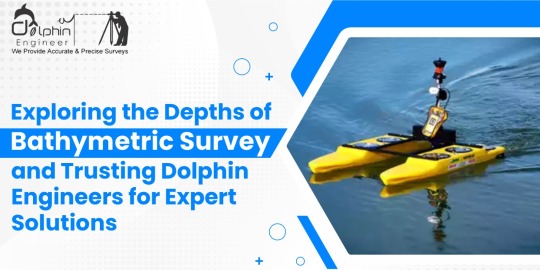
Bathymetric surveys are essential in understanding and mapping the underwater topography of oceans, seas, rivers, and lakes. The process involves measuring the depths and shapes of underwater features, which can provide invaluable data for various industries, including marine construction, navigation, environmental studies, and resource exploration.
Understanding Bathymetric Surveys
Bathymetric surveys utilize advanced technologies such as sonar systems, echo sounders, and GPS equipment to develop highly accurate maps of underwater surfaces. Such maps enable the determination of depth variations, sediment buildup, and any underwater structures. Such data is vital for the planning of maritime construction projects such as ports, bridges, or pipelines. It further helps in ensuring safe navigation for vessels, understanding marine ecosystems, and detecting potential hazards beneath the water surface. These surveys also significantly add to scientific research when they provide insights into underwater geological formations and aquatic habitats. For example, knowing the dispersion of sediment in a river gives one a chance to discover erosion patterns and aid in the proper design of flood control systems.
Why Choose Dolphin Engineers for Bathymetric Surveys
Dolphin Engineers is the most trusted name in the industry when it comes to bathymetric surveys. Here's why they are the best fit for your project:
Accuracy and Reliability Dolphin Engineers uses high-tech equipment and tested methodologies to ensure highly accurate results. The team ensures that every data point is carefully recorded and analysed to provide reliable information for decision-making.
Experienced Professionals The company has a team of experienced professionals who have extensive experience in conducting complex bathymetric surveys. Their experience allows them to handle various challenges, whether it is surveying shallow rivers or deep ocean floors.
Customized Solutions Dolphin Engineers understands that each project has different requirements. It works closely with clients to come up with the survey plans aligned with specific goals and challenges that result in meeting expectations.
Commitment to Safety is a top priority for Dolphin Engineers. Their operations comply with all industry standards and regulations, ensuring that both personnel and the environment are protected throughout the survey process.
Dolphin Engineers delivers comprehensive services other than data gathering, including the processing, analyzing, and generating reports. This is done so that the deliverable will be friendlier to its users, ensuring that the end clients can work with the finding properly.
Cost-Effective Options Despite providing premium-quality services, Dolphin Engineers offers competitive pricing. They strive to deliver value for money by optimizing resources and streamlining processes.
Applications of Bathymetric Surveys
Bathymetric surveys have numerous applications in various fields:
•Marine Construction: It provides foundational data for the construction of harbors, oil rigs, and underwater tunnels.
•Environmental Monitoring: Assessing aquatic ecosystems and tracking changes over time.
•Resource Exploration: Identifying underwater mineral deposits or potential fishing zones.
•Navigation Safety: Updating nautical charts to prevent accidents.
•Flood Management: Studying riverbeds to predict and mitigate flooding risks. Conclusion
Choosing a reliable bathymetric survey partner is indispensable to achieving very accurate and useful results. This is because the company, with Dolphin Engineers advanced technologies, experienced professionals, and service commitment to ensuring that every single project is handled to the high standards of success, will give a client the needed confidence in what they receive-quality and accurate underwater data.
#BathymetricSurveys#DolphinEngineers#MarineSafety#SonarTechnology#UnderwaterMapping#PrecisionMapping#NavigationSolutions#EchoSounding#MarineSurveying#SurveyingExperts#FloodManagement#AdvancedSurveyTech#Oceanography#AccurateDataSolutions#ResourceExploration#GeospatialAnalysis#HydrographicSurveying#TrustedSurveyPartner#EnvironmentalConservation#SmartMapping#EnvironmentalMonitoring#SedimentAnalysis#MarineConstruction#CoastalEngineering#InfrastructurePlanning#WaterResourceManagement
0 notes
Text
Geospatial Analysis In Market Research: Mapping Consumer Trends
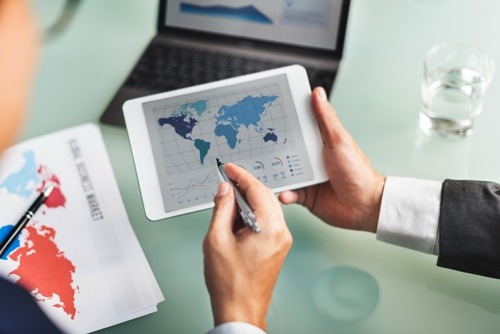
Discover how geospatial analysis is revolutionizing market research. Explore how to leverage location data to uncover consumer trends, understand market dynamics, and make data-driven decisions. Learn about the latest advancements in geospatial technology and its applications in various industries.
Link : https://maction.com/geospatial-analysis-in-market-research-mapping-consumer-trends/
#geospatialanalysis#marketresearch#consumertrends#locationdata#datadrivenmarketing#spatialanalytics#geographicinformationsystems(GIS)#mapping#consumerbehavior#marketsegmentation#siteselection#competitiveanalysis#customerjourneymapping#locationintelligence#spatialstatistics#bigdata#retailanalytics#urbanplanning
0 notes
Text







🌍 Exploring Geography insights through a conversation between an expert and an enthusiast! Discover the dynamics of our planet and the fascinating aspects of its diverse landscapes. 🗺️✨
#Geography#ExpertAndEnthusiast#EarthSciences#GeospatialAnalysis#WorldExplorer#GeographicalKnowledge#PlanetEarth#GlobalInsights
0 notes
Text
Data preparation for AI-fueled Geospatial Analysis

Its been ages since businesses, governments, researchers, and journalists are using satellite data that helps understand the physical world and take action. As the geospatial industry evolves, so are the ways in which geospatial professionals use data to solve problems. Satellite imagery contains information that is useful for data-related projects. That’s why we’re seeing the rise of AI and ML in this industry.
Geospatial intelligence provides geographical information and distribution of elements in a geographic space and is now an essential tool for everything, from national security to land use and planning to agriculture and a host of commercial and government functions.
AI and Computer Vision for Geospatial Analysis
Artificial intelligence (AI) is revolutionizing the field of geospatial analysis by providing advanced tools and techniques to process and analyze vast amounts of geospatial data. Geospatial data includes information about the Earth's surface, such as satellite imagery, aerial photographs, and geographic information systems (GIS) data.AI algorithms and computer vision techniques are used to extract meaningful insights from geospatial data. These technologies enable automated data processing, pattern recognition, and scalable analysis, significantly improving the efficiency and accuracy of geospatial analysis tasks.
One of the key advantages of using AI in geospatial analysis is the ability to process large volumes of data quickly. Traditional manual methods of analyzing geospatial data can be time-consuming and labor-intensive. AI-powered algorithms can analyze massive datasets in a fraction of the time, enabling faster decision-making and response.AI also enhances the accuracy of geospatial analysis by reducing human error and subjectivity. Computer vision algorithms can detect and classify objects in satellite imagery, such as buildings, roads, and vegetation, with high precision. This helps in various applications like urban planning, disaster response, and environmental monitoring. Below are a few applications of Geospatial AI which cater to many industries and use cases:
Object detection
One of the primary applications of AI and Computer Vision in geospatial and satellite imagery is object detection and recognition. Through deep learning algorithms, AI models can accurately identify and classify objects such as buildings, roads, vegetation, and water bodies in satellite images. This capability is crucial for urban planning, environmental monitoring, disaster response, and infrastructure development.
Classification
Another significant use case is land cover classification, which involves categorizing different land types based on satellite imagery. AI algorithms can analyze multispectral and hyperspectral data to identify land cover classes like forests, agricultural fields, urban areas, and water bodies. This information is vital for land management, ecological studies, and monitoring of changes in land use over time.
Anomaly detection
AI and Computer Vision also play a crucial role in change detection and anomaly detection in geospatial imagery. By comparing satellite images taken at different times, AI models can identify changes in the landscape, such as deforestation, urban expansion, or natural disasters. This helps in monitoring environmental changes, detecting illegal activities, and supporting disaster management efforts.
Furthermore, AI-powered image segmentation techniques enable the extraction of detailed information from geospatial imagery. For instance, semantic segmentation can accurately delineate different land cover classes within an image, while instance segmentation can identify and track individual objects or features of interest. These capabilities find applications in precision agriculture, infrastructure monitoring, and resource management.
Map better with Data preparation for Geospatial AI
Accurate training data is essential for geospatial AI applications to provide precise and reliable results to users. Geospatial AI involves analyzing and interpreting data related to geographic locations, such as maps, satellite imagery, and spatial databases. Training data acts as the foundation for training machine learning algorithms and models in geospatial AI systems. Here are the typical steps involved in data preparation for geospatial AI:
Data Collection
Data collection involves gathering relevant geospatial data from various sources. This can include satellite imagery, aerial photography, GIS databases, GPS data, sensor data, and user-generated content. The data collection process should align with the specific requirements of the geospatial AI application. For example, if the application involves mapping and navigation, data collection may focus on obtaining accurate and up-to-date map data, including road networks, points of interest, and traffic information. If the application is related to land use analysis, data collection may involve acquiring satellite imagery with land cover information. The goal is to collect a diverse and representative dataset that encompasses the geographical area of interest.
Data Curation
Data curation involves the process of cleaning, organizing, and preparing the collected geospatial data for training AI models. This step is crucial for ensuring the accuracy, consistency, and quality of the data. Data cleaning entails removing duplicate records, addressing missing or erroneous values, and handling outliers or noise present in the dataset. It may also involve standardizing the data formats, ensuring consistent coordinate systems, and resolving any inconsistencies or conflicts within the data. Additionally, data curation may involve preprocessing steps like rescaling or normalizing numerical attributes to facilitate effective model training. The goal of data curation is to create a refined and reliable dataset that is ready for subsequent analysis and model training.
Data Annotation
Data annotation is the process of labeling or tagging specific features or regions of interest within the geospatial data. It involves assigning semantic or spatial labels to the data to provide the necessary ground truth for training supervised AI models. In geospatial AI, annotation can encompass various tasks such as object detection, segmentation, classification, or tracking. For example, in satellite imagery, data annotation may involve marking buildings, roads, vegetation, or water bodies. In aerial imagery, it could involve labeling objects like vehicles, pedestrians, or buildings. The annotation process can be performed manually by human annotators with domain expertise or using automated tools in some cases. Data preparation services encompass various annotation techniques tailored to geospatial applications.

Point Annotation: Point annotation involves marking specific points or coordinates within geospatial data. It is commonly used for tasks that require pinpointing precise locations or points of interest. For example, annotating specific addresses, landmarks, or geographic coordinates enables accurate geocoding, location-based searches, or geofencing.

Image Classification: Image classification in geospatial AI enables tasks such as environmental monitoring, land use planning, infrastructure assessment, or change detection. It provides valuable insights and information by automatically categorizing and analyzing large volumes of geospatial data. Data annotation experts classify objects in images based on custom taxonomies, such as land, road, vehicles, residential properties, and more.

Conclusion
Data preparation plays a pivotal role in the success of geospatial AI applications, enabling accurate and reliable results in various geographic contexts. Geospatial AI relies on diverse and precise data, collected from various sources, to train models effectively. By emphasizing TagX's expertise in each step of the data preparation cycle, we demonstrate our ability to deliver high-quality geospatial AI solutions. Our proficiency in data collection, curation, and annotation ensures that the training data we provide is accurate, reliable, and tailored to meet the unique requirements of our clients. With our comprehensive data preparation process, we empower users to leverage geospatial AI effectively and achieve their goals with super-sharp results.
0 notes
Text
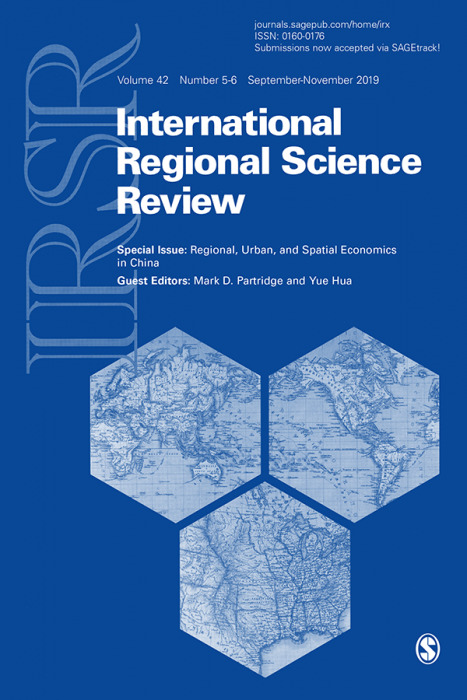
International Regional Science Review Journal and Magazine Subscription
Worldwide Regional Science Review (IRSR), distributed quarterly, is a global gathering for business analysts, geographers, organizers, and other social researchers to share significant exploration discoveries and methodological leap forwards. Zeroing in on issues of hypothesis, technique, and public approach where the spatial or local measurement is focal, IRSR endeavors to advance valuable insightful exploration that is safely attached to this present reality.
#RegionalScienceReview#IRSRMagazine#RegionalResearch#GeospatialAnalysis#EconomicDevelopment#UrbanStudies#SpatialEconometrics#RegionalPolicy#GeographicAnalysis#RegionalEconomics#magazine#magazinesubscriptions
0 notes
Link
Geographic information systems. There, I've lost a few of you already, but you're missing out because GIS is more than about where things are, but why they're there, and quite a few of those reasons are around why people do people things. Helen McKenzie is a cartographer, data visualiser, and geospatial advocate who is passionate about finding meaning in complex data and making information beautiful.
We speak about Helen's love of maps and how we can use geospatial analysis to elegantly give us more meaning to the way we live in the world around us and keep our societies ticking away.
About Helen McKenzie
Helen McKenzie is a Geospatial Advocate which means her job is to get people excited about all things geospatial! She has been working in the geospatial industry for around 10 years and has recently made the move from consultancy to technical marketing, whether that's through running live workshops or writing blogs about using GIS to choose the best venue for the Eurovision Song Contest.
Twitter: @helenmakesmaps Instagram: @helen.makes.maps LinkedIn: https://www.linkedin.com/in/helenmckenzie003
Watch or listen on your favourite platform.
Show Notes
[00:01:32] How Helen found her way to geography and GIS. [00:05:04] Helen's dissertation combining Jane Austen and GIS. [00:08:57] What does work in geospatial sciences look like? [00:12:04] The depth of detail in understanding our communities. [00:15:19] Michele talks about warm data again because warm data is cool. [00:17:06] GIS is about engagement with the data and making those connections. [00:21:00] Becoming a geospatial advocate. [00:27:20] Understanding from geospatial data and its value to businesses. [00:29:25] The cost and factors involved in opening a new store branch. [00:32:29] Michele has too many bubble tea shops nearby. Her local area could have benefitted from some geospatial data. [00:34:14] What does a geospatial advocate do? [00:39:55] Finding your audience. [00:41:46] What Helen doesn't like about her work. [00:42:48] The challenges of public speaking.
Follow STEAM Powered
YouTube Facebook Instagram Twitter Patreon
0 notes
Video
youtube
Geospatial Analysis: Transforming Our World in 2024# #youngresearchers#a...
Geospatial analysis in 2024 is revolutionizing how we understand and interact with our environment. By integrating advanced technologies like AI, remote sensing, and big data, geospatial analysis provides critical insights for urban planning, disaster management, environmental conservation, and more. This transformative tool helps visualize complex data, uncover patterns, and make informed decisions, driving innovation across various sectors and improving quality of life globally.
Hashtags: #ResearchPioneer #ScienceMentor #ScientificDiscovery #ScienceEducation#STEMAdvocate #GeospatialAnalysis #GIS #RemoteSensing #BigData #UrbanPlanning #DisasterManagement #EnvironmentalConservation #AI #DataVisualization #Innovation2024#Postdoc #LabWork #FieldResearch #DataScience #InnovationInScience #ResearchImpact #sciencecommunication
International Young Scientist Awards
Website link: youngscientistawards.com
Nomination Link : https://x-i.me/suwyou5
Contact Us: [email protected]
Social Media:
Twitter : https://twitter.com/youngsc06963908
Linkedin- : https://www.linkedin.com/in/shravya-r...
Pinterest : https://in.pinterest.com/youngscienti...
Blog : https://youngscientistaward.blogspot....
Tumblr : https://www.tumblr.com/blog/shravya96
0 notes
Text
Exploring the Top Providers for 9 Types of Location Data

In today's data-driven world, location data is a goldmine for businesses and decision-makers. But who are the go-to providers for various types of location data? Let's dive in and explore some of the best:
GPS Data: GPS giants like Garmin and TomTom are trusted sources for accurate global positioning data, crucial for navigation and tracking.
Geocoding Services: Google Maps Geocoding and HERE Geocoder offer precise geocoding services, converting addresses into geographical coordinates.
Mapping and Navigation: Google Maps and Apple Maps lead the way in providing comprehensive mapping and navigation data, vital for location-based services.
Real-time Traffic Data: Waze, now owned by Google, stands out for real-time traffic updates, helping users avoid congestion.
Retail Foot Traffic Data: Placer.ai and SafeGraph are known for offering valuable insights into foot traffic patterns, assisting retailers and investors.
Weather Data: The Weather Channel and AccuWeather are reliable sources for location-specific weather forecasts and historical data.
Social Media Location Data: Social platforms like Facebook and Twitter provide location data through user check-ins and geotagged posts, aiding marketers.
IoT Location Data: Companies like Sigfox and LoRaWAN provide IoT-specific location data, supporting IoT applications and asset tracking.
Local Business Data: Yelp and Yellow Pages offer rich information on local businesses, helping users find services in their vicinity.
When it comes to location data, the key is reliability, accuracy, and relevance to your specific needs. Choosing the right provider can significantly impact your business strategies and decision-making processes. So, explore these options, assess your requirements, and unlock the power of location data for your endeavors! #LocationData #DataProviders #GeospatialAnalysis
0 notes
Text
Learn QGIS 3 Like a Pro – Udemy Course at 48% OFF!
🌟 Learn QGIS 3 like a pro with this Udemy course.
Get 48% OFF and enroll for just $12.99.
Perfect for beginners and experts alike. Don’t wait – offer ends soon! 👉
#QGIS3#LearnGIS#UdemyCourse#GeospatialAnalysis#MappingSkills#UdemyDiscount#GISForAll#TechEducation#SaveOnUdemy#GISMastery
0 notes
Photo
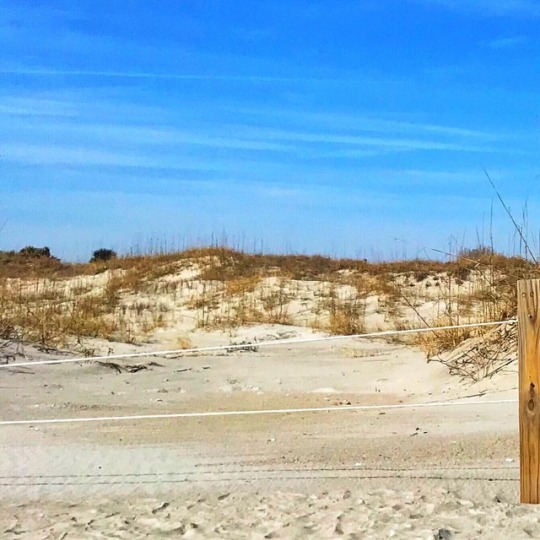
. Once upon a day, when we learn how to use RTK . #landscape #beach #nature #class #rtkday #geospatialanalysis #coastalmanagement #fieldtrip #mcop #evs #uncw #globalseahawks #springsemester2018 #wrightsvillebeach #wilmington #wilmingtonnc #northcarolina #iphoneonly #snapseed #panols #iphonography (at Wrightsville Beach, North Carolina) https://www.instagram.com/p/BvxYdlvFfNx/?utm_source=ig_tumblr_share&igshid=n4gd8nz80jzs
#landscape#beach#nature#class#rtkday#geospatialanalysis#coastalmanagement#fieldtrip#mcop#evs#uncw#globalseahawks#springsemester2018#wrightsvillebeach#wilmington#wilmingtonnc#northcarolina#iphoneonly#snapseed#panols#iphonography
2 notes
·
View notes
Text

Mastering QGIS & ArcGIS Desktop 10.8: From Beginner to Pro.
English Video tutorial, just for $9.99 (NORMAL price $19.9) till 25/02/2025. Get it once and you will get endless access right. Visit:
Unlock the full potential of QGIS and ArcGIS Desktop 10.8 with this comprehensive guide. Learn essential GIS skills, spatial analysis, and cartography techniques from scratch to expert level. Perfect for students, professionals, and GIS enthusiasts.
#QGIS#ArcGIS#GISMapping#GeospatialAnalysis#GISSoftware#SpatialData#Cartography#Mapping#RemoteSensing
0 notes
Photo




000016 - COVID-19 in India
Data: https://www.mohfw.gov.in/ Cases shown in the images are updated as of 04 October 2020, 08:00 AM IST
NOTE: Cases for Lakshadweep are shown as 0 in all images as the data for the UT is not given on the above site.
India - State Boundaries Map is provided by Data{Meet} Community Maps Project. It's made available under the Creative Commons Attribution 2.5 India.
Choropleth map of Cases by State created using Python 3.7.9. Modules used: pandas, geopandas and matplotlib.pyplot.
#choroplethmap#geospatialanalysis#datavisualization#datascience#python#pandas#geopandas#matplotlib#pyplot#india#covid_19#corona#coronavirus#coronaindia#programming#data#covid#covid19#covid19india
0 notes
Photo
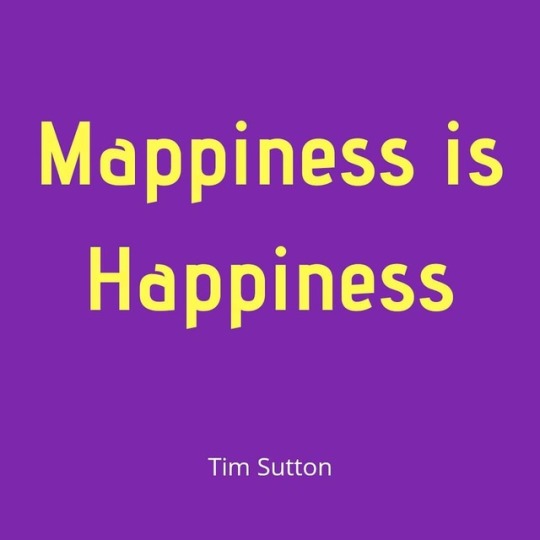
#Map #cartographer #cartography #cartographyart #mapitaly #mapez #MAPPhotograpy #mapiful #mappedcake #mappinguav #MapsTimeNow #gis #gisanalyst #geologists #geospatialanalysis #geoafrikana #gischat https://www.instagram.com/p/B2Z85XVhiwZ/?igshid=pvw5ixfur5kf
#map#cartographer#cartography#cartographyart#mapitaly#mapez#mapphotograpy#mapiful#mappedcake#mappinguav#mapstimenow#gis#gisanalyst#geologists#geospatialanalysis#geoafrikana#gischat
0 notes